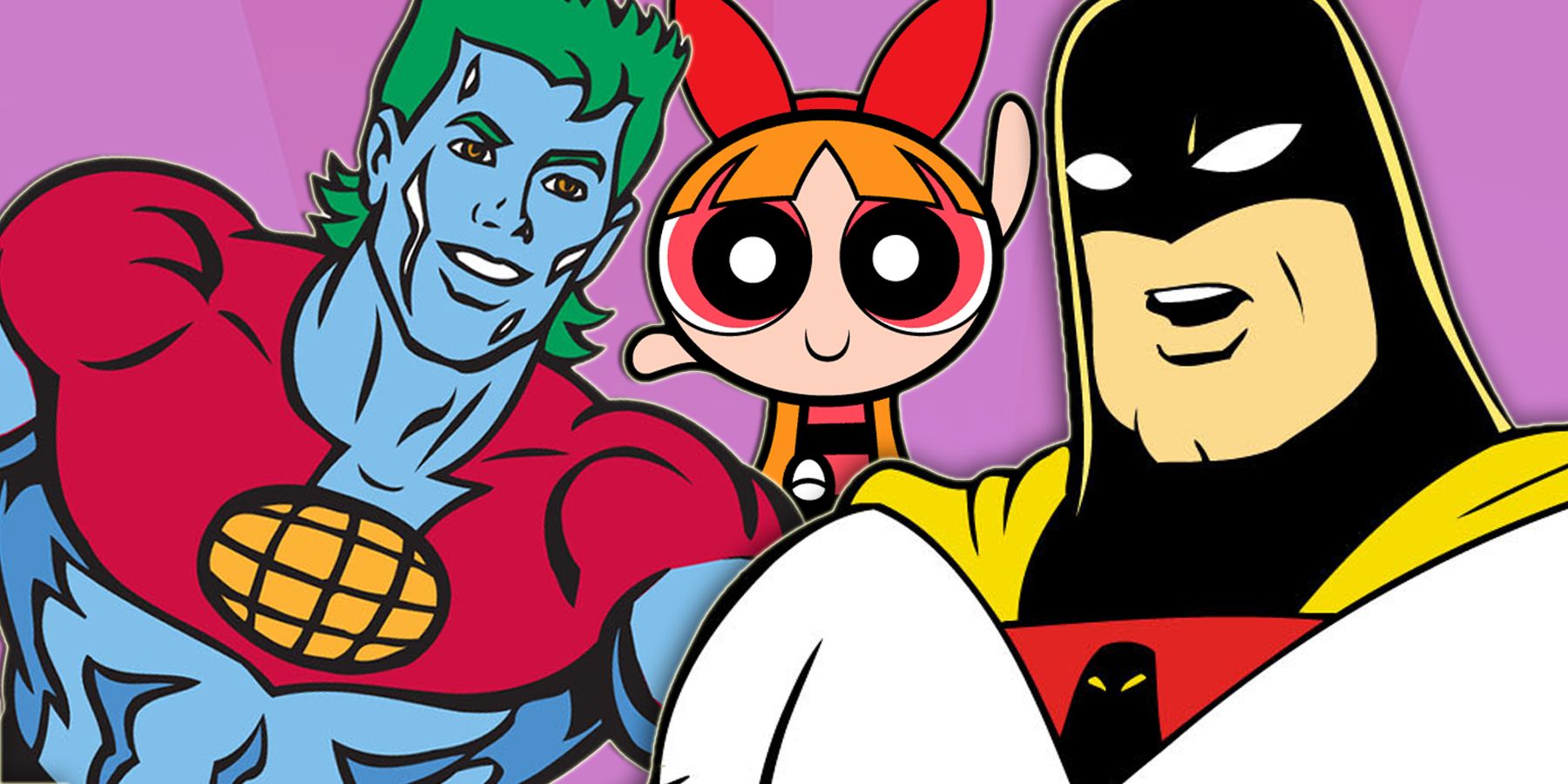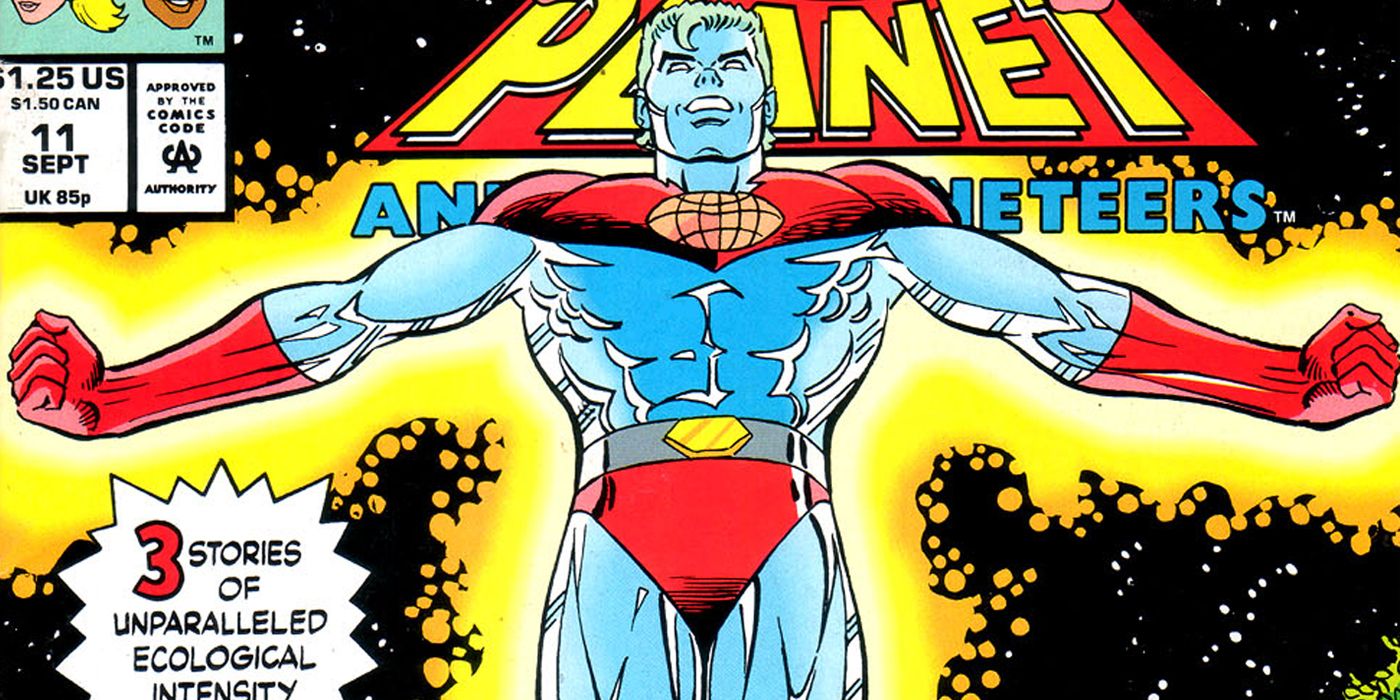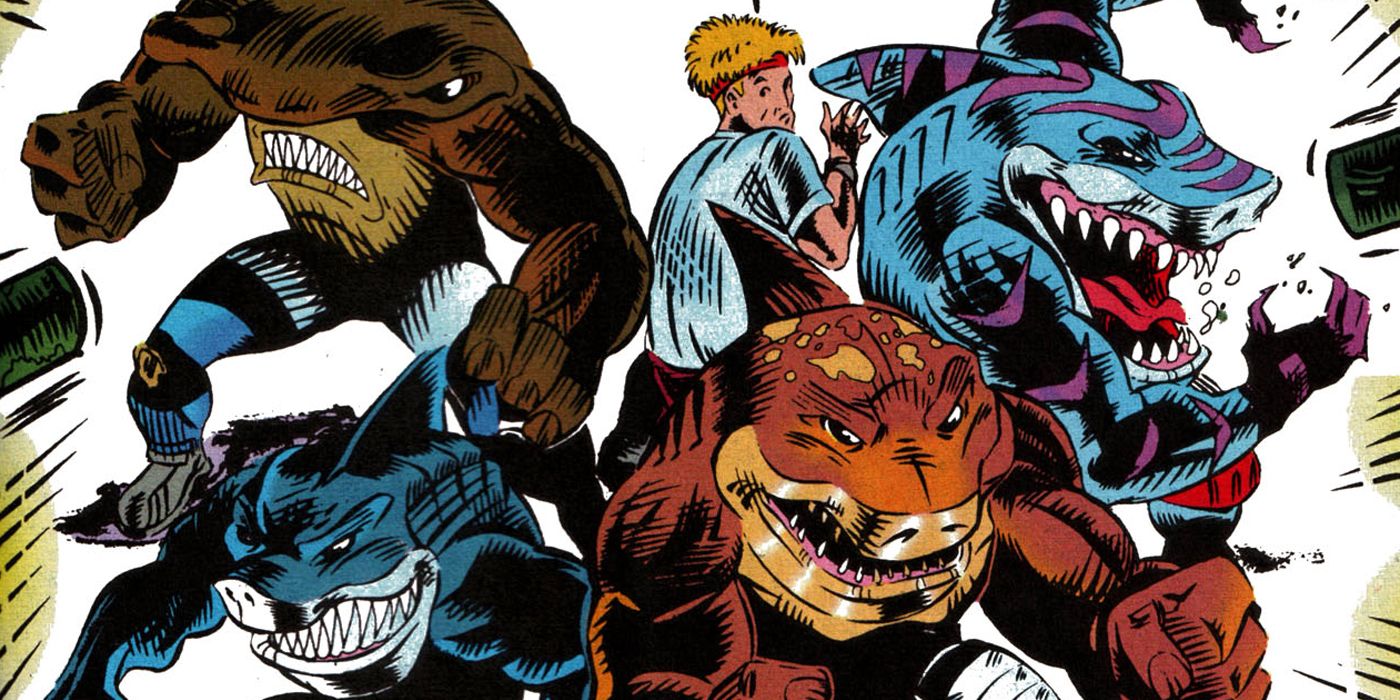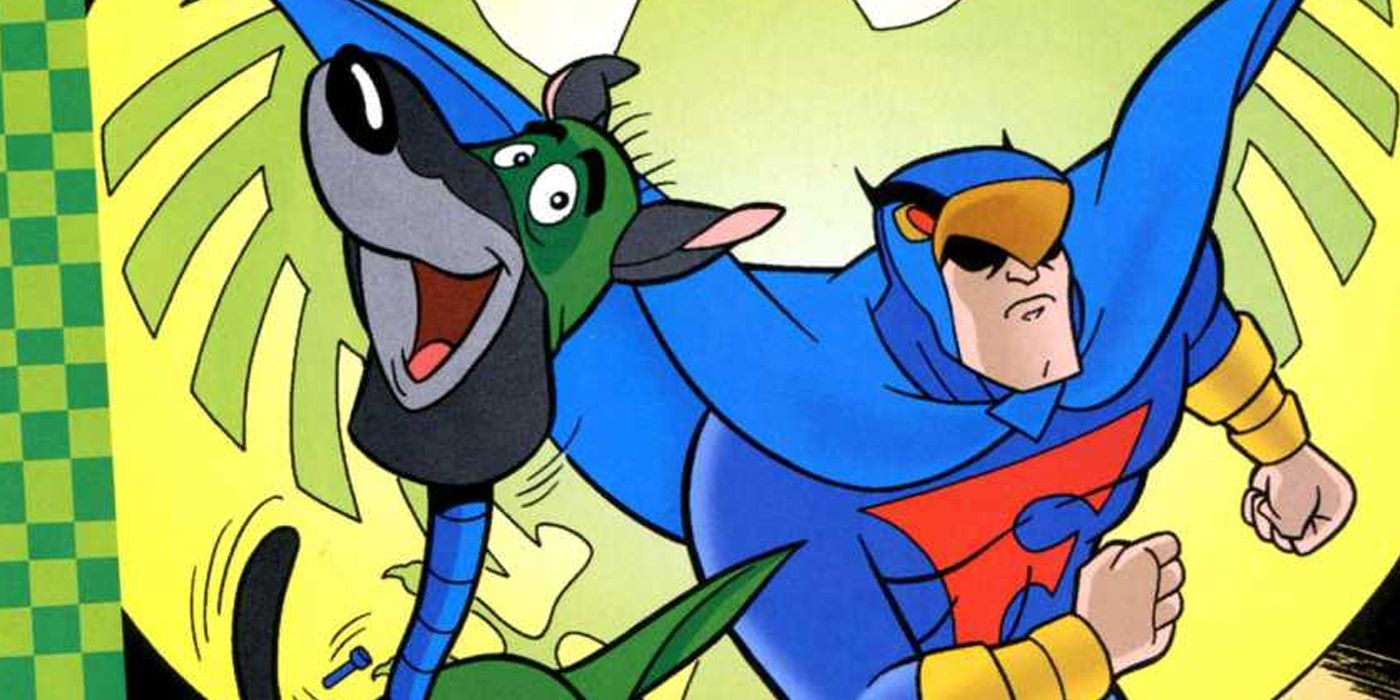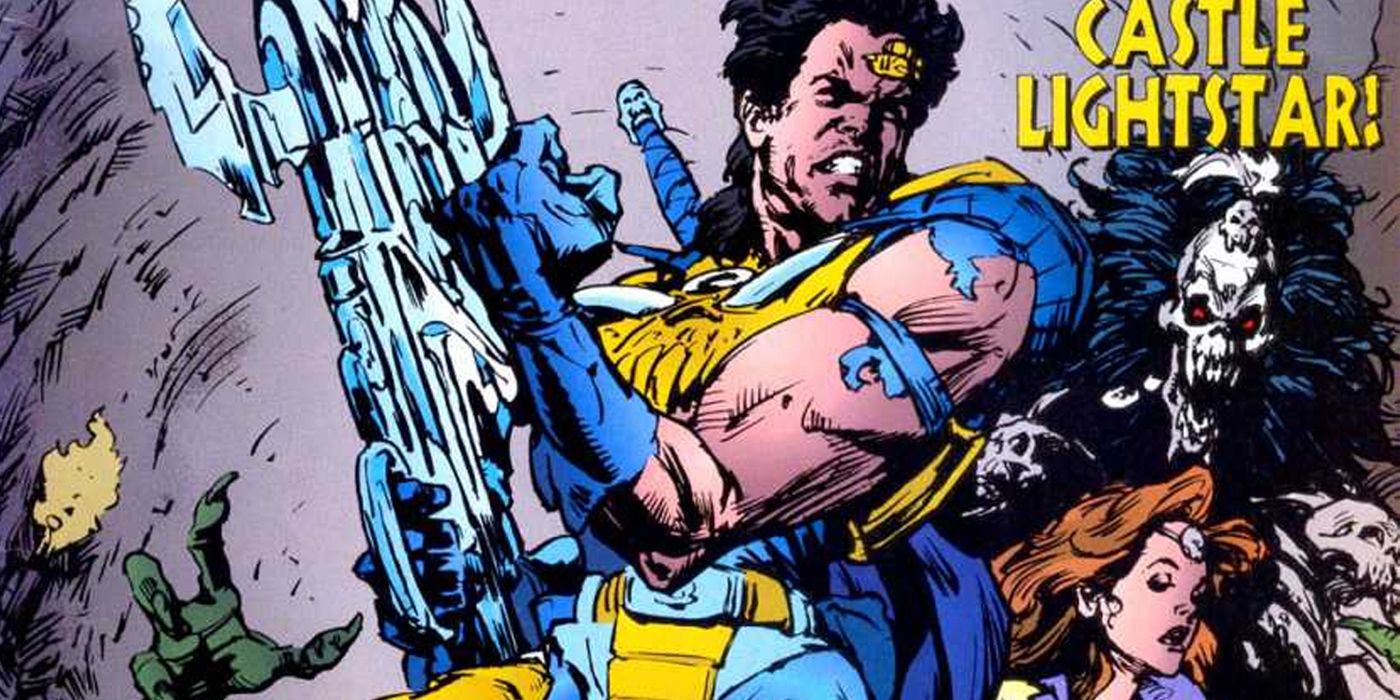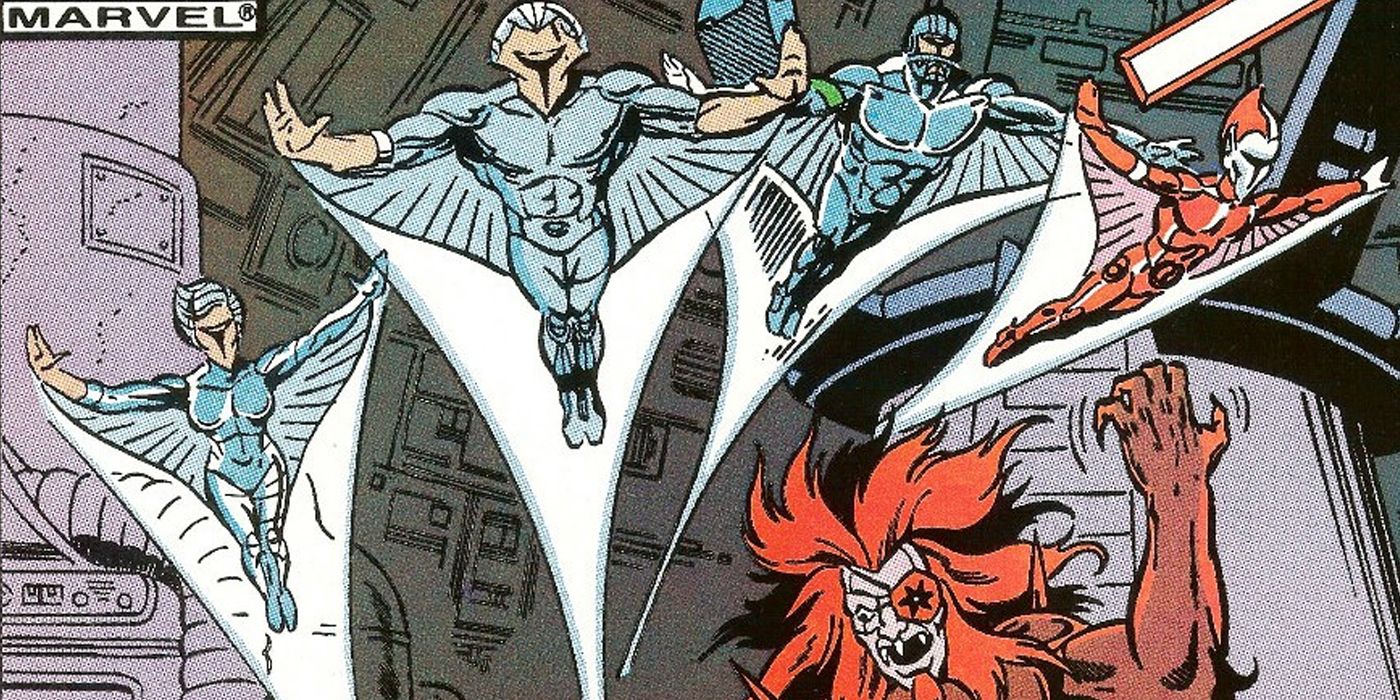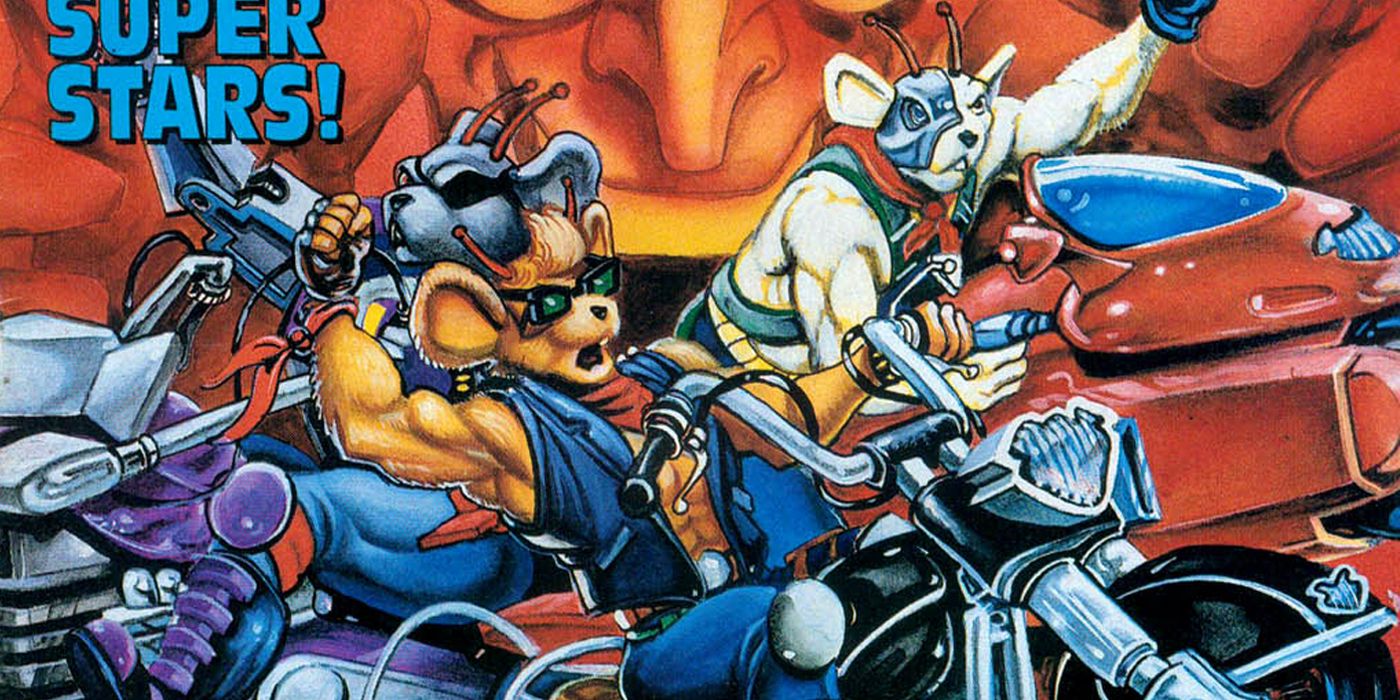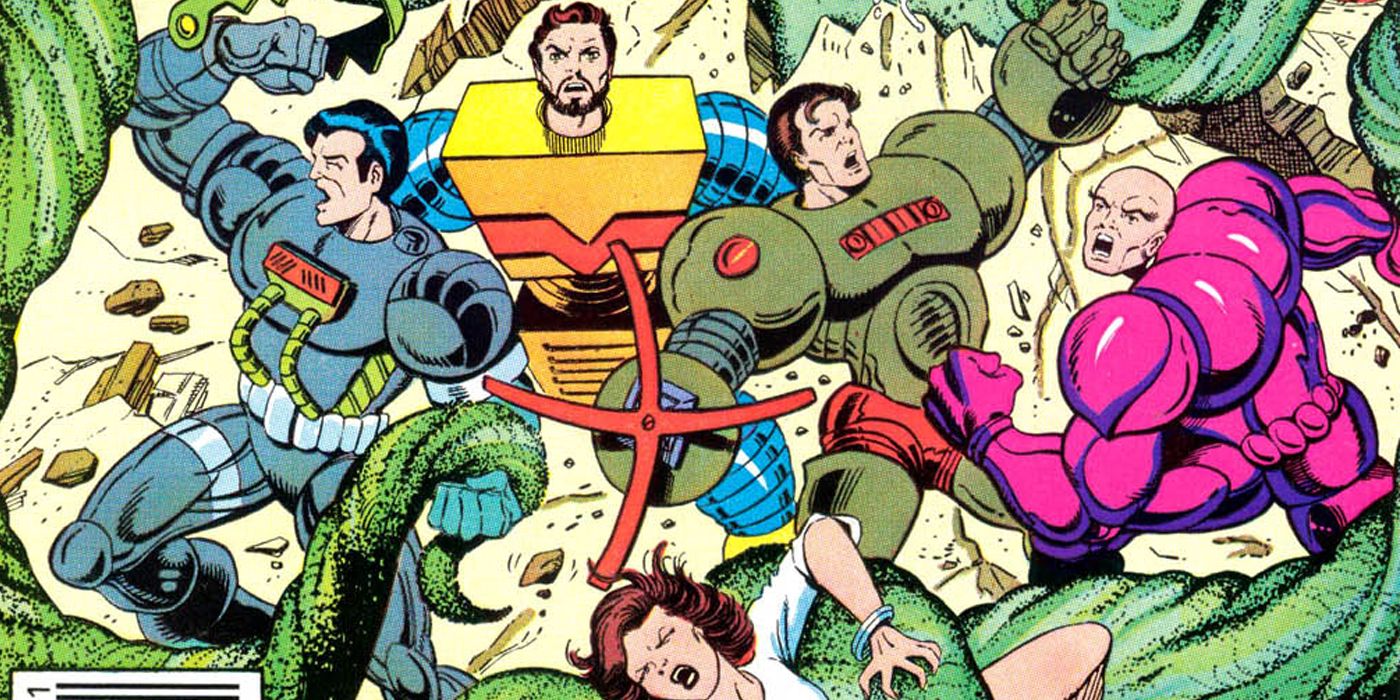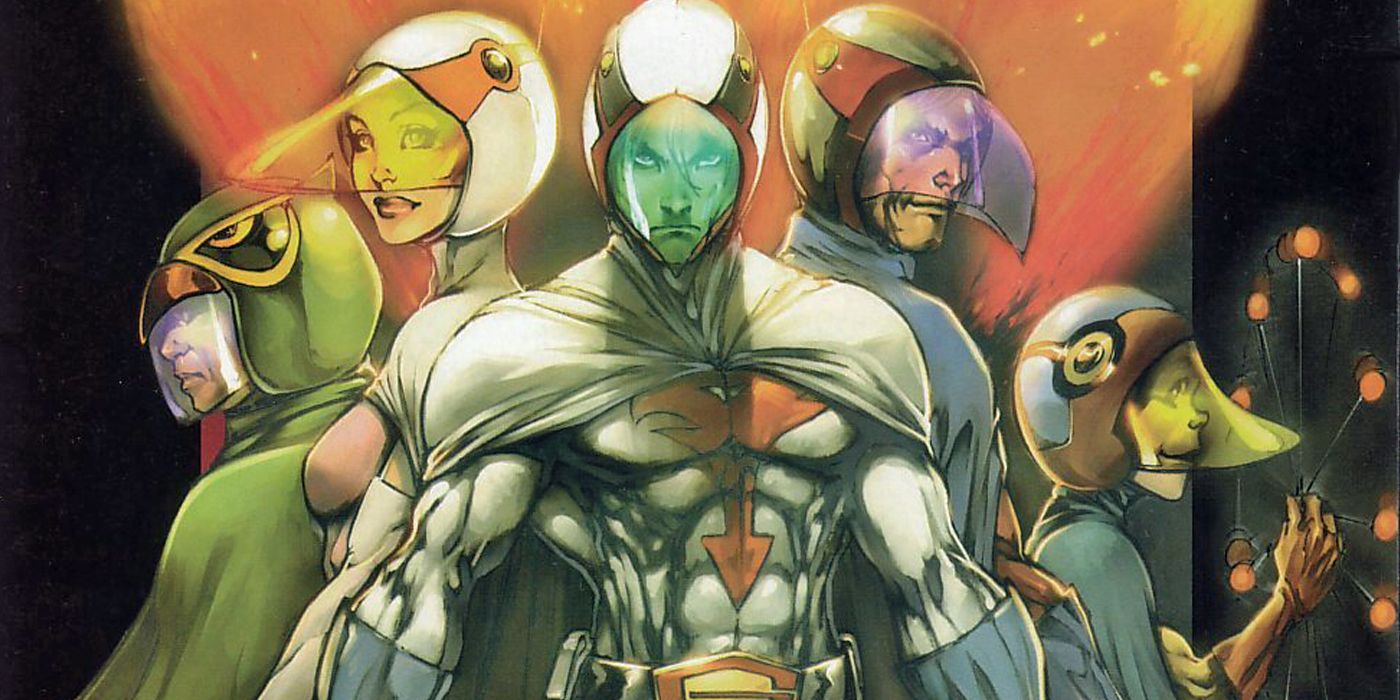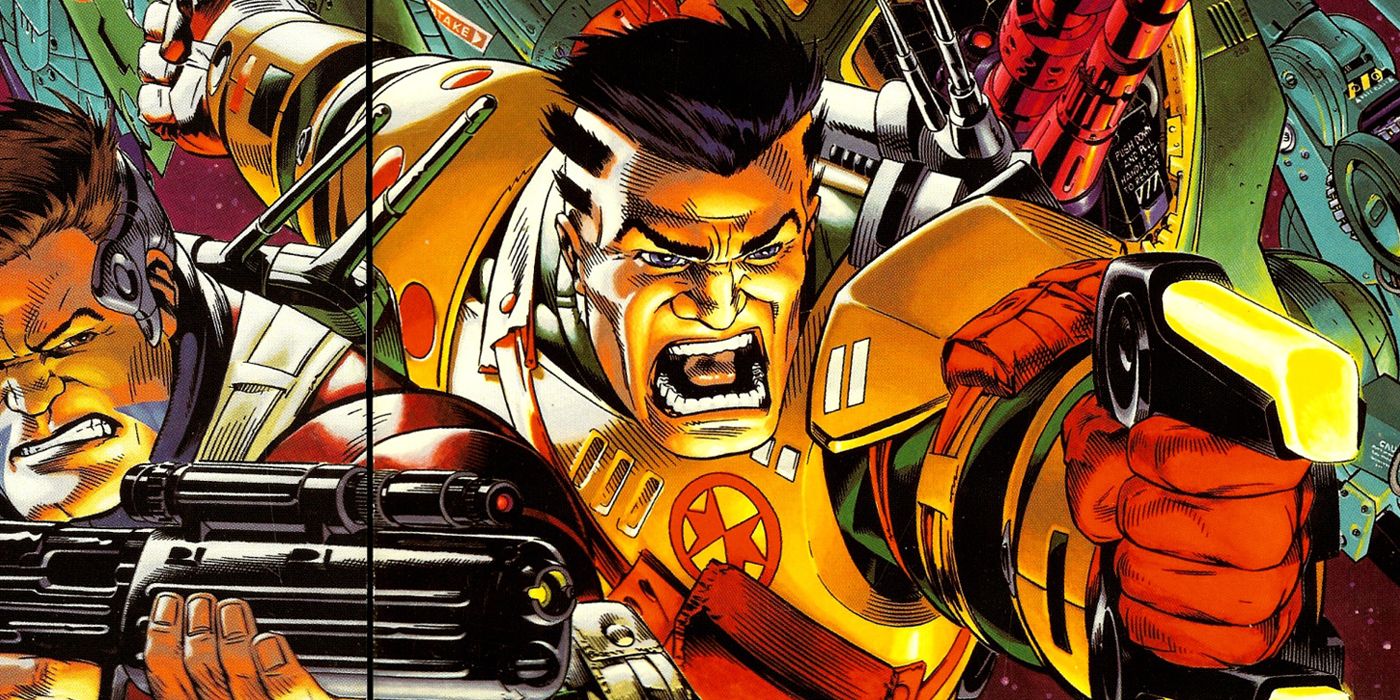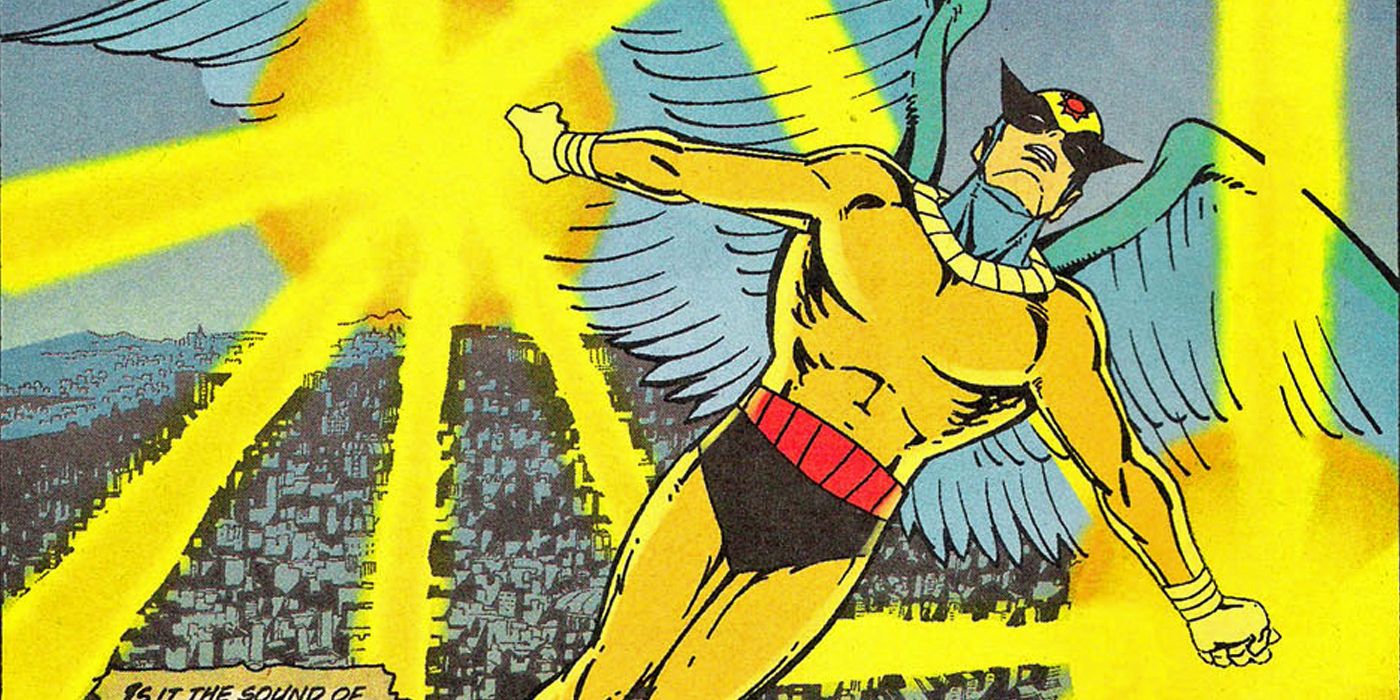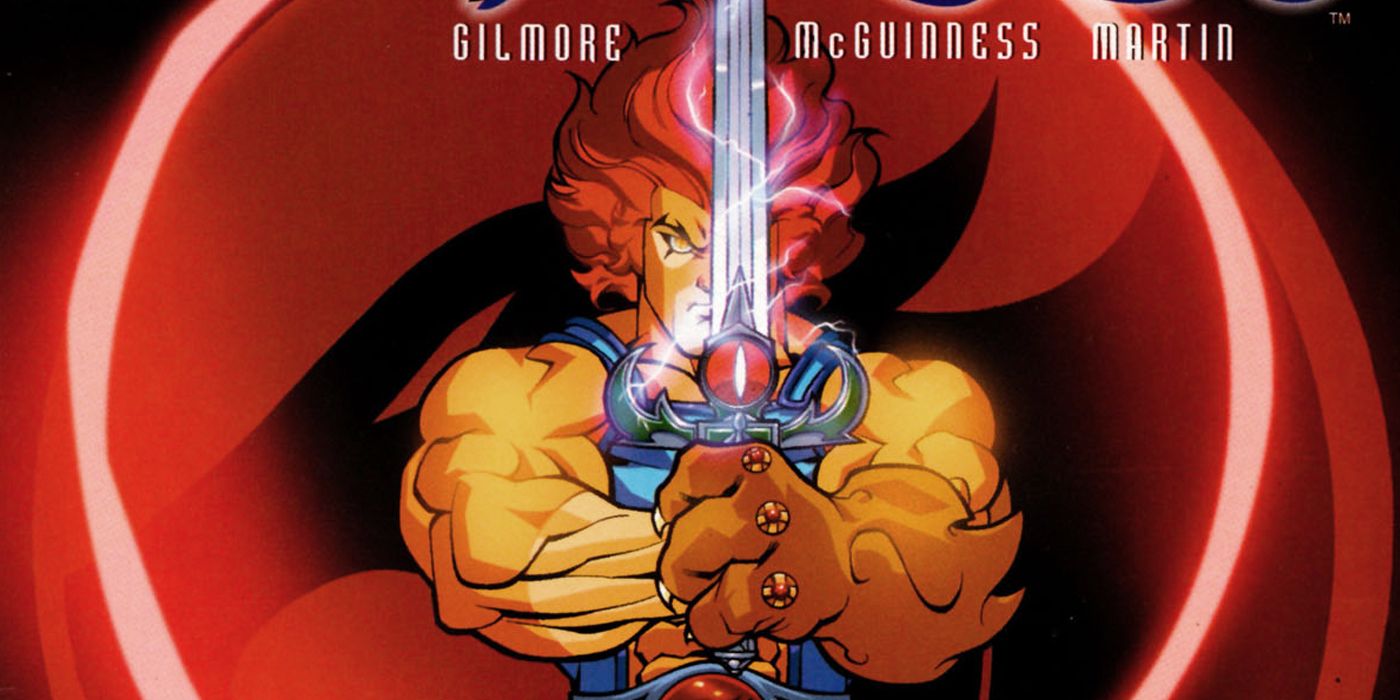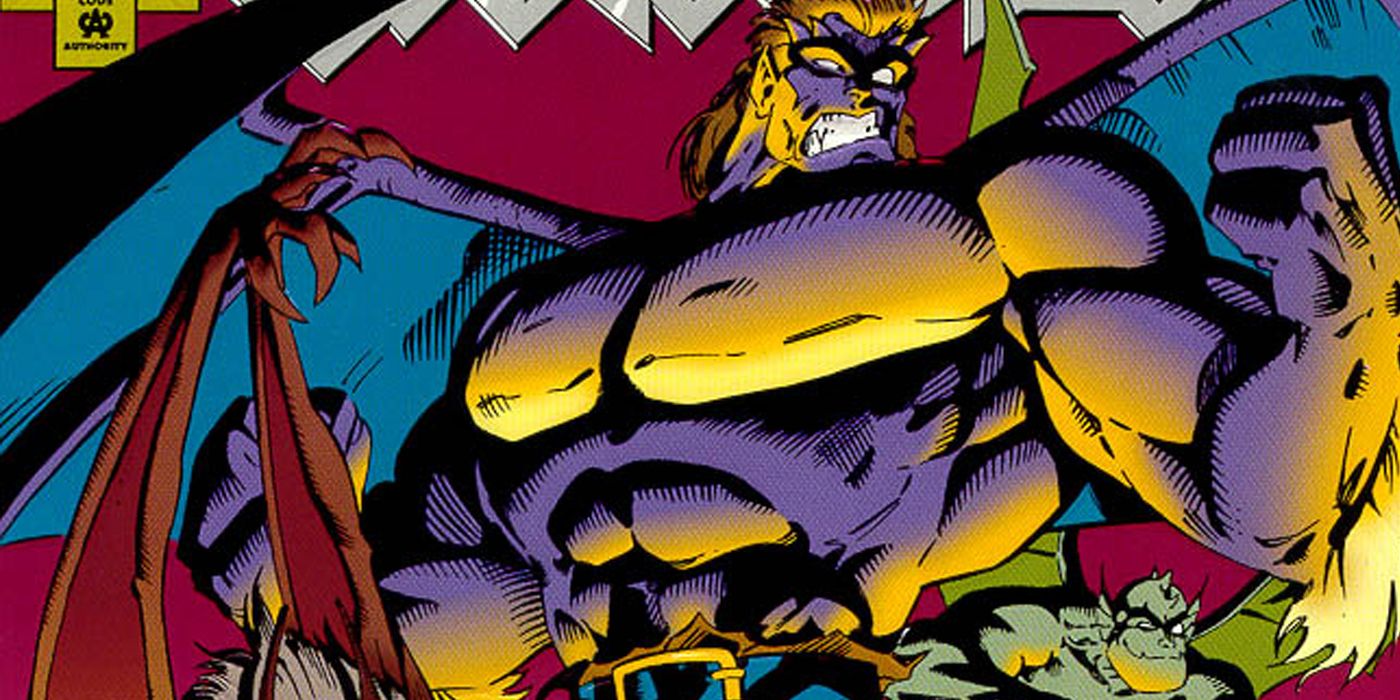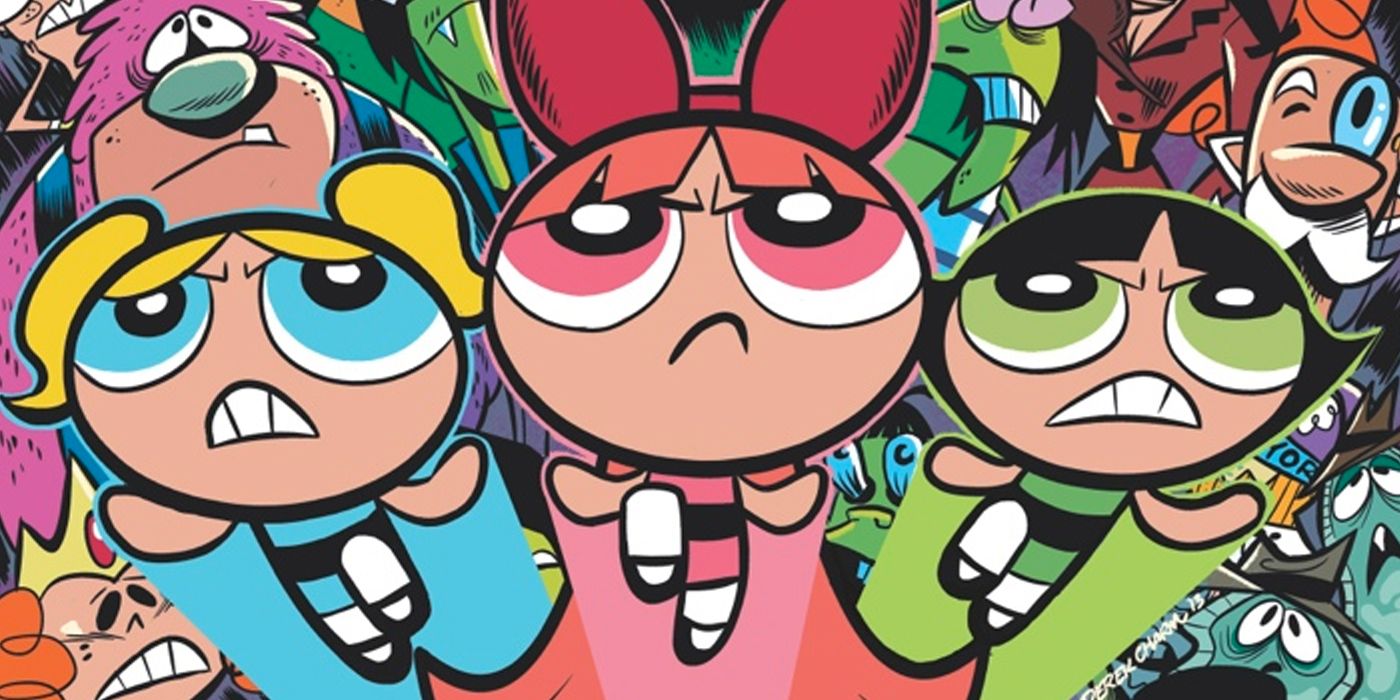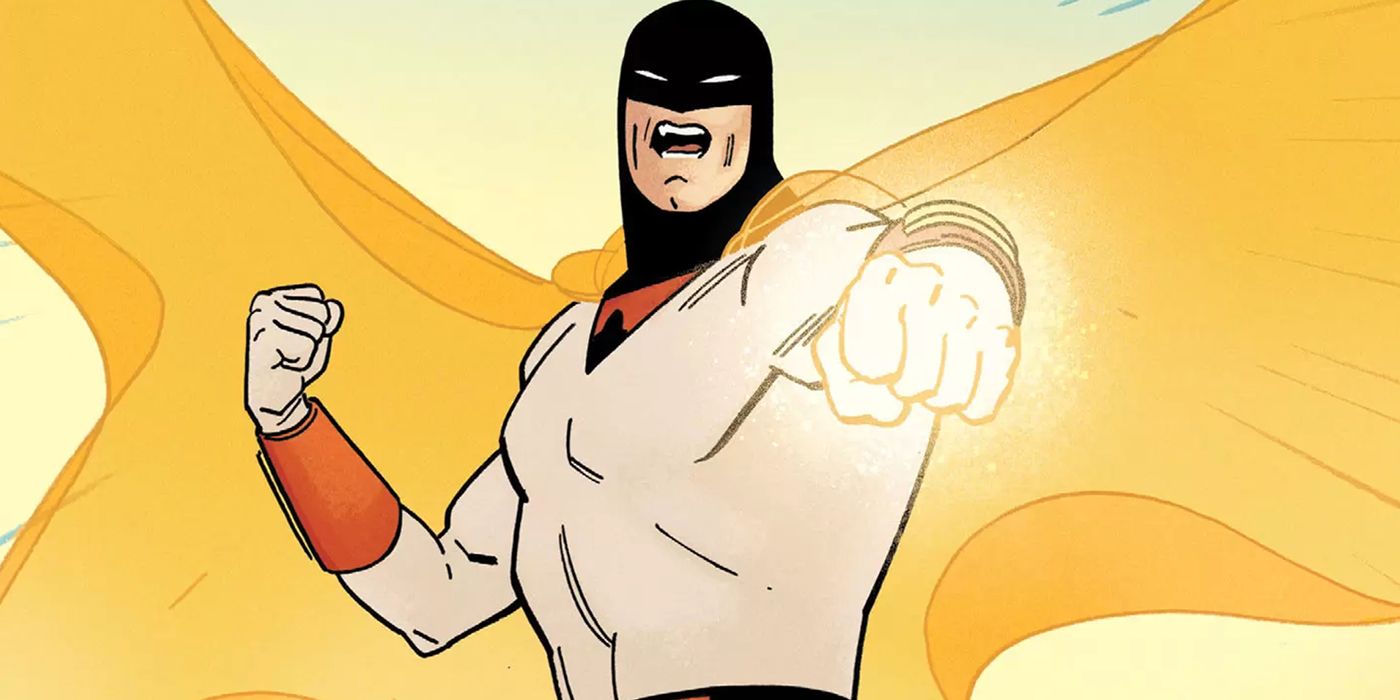With their brightly-colored costumes and dynamic adventures, superheroes are the perfect subjects for cartoons. While many animated superheroes were adapted from the pages of Marvel or DC Comics, several iconic heroes got their start in animated form. Some of these characters were even popular enough to make the jump from the small screen to the world of comics.
RELATED: Outside the Panels: Superhero Shows That Weren't Based on Comics
Now, CBR is taking a look back at some superheroes who debuted in cartoons before appearing in comic books. For this list, we won’t be looking at characters who debuted in cartoons based on existing properties like Harley Quinn. While this list is hardly comprehensive, we’ll be looking at superheroes who appeared in an original cartoon series before starring in at least one issue of a comic book.
15 Captain Planet and the Planeteers
Starting in 1990, Captain Planet began a decades-long campaign to “take pollution down to zero.” Over six seasons and 113 episodes, “Captain Planet and the Planeteers” followed the adventures of the popular environmentalist superhero with a green mullet. In the show, Captain Planet could be summoned by the Planeteers, a multinational group of teens who were given power rings by the Earth spirit Gaia. The combined group usually foiled the polluting schemes of "Eco-Villains,” who were often voiced by celebrities. After the show’s first three seasons, the DiC-Entertainment-produced program was officially retitled “The New Adventures of Captain Planet” when Hanna-Barbera took over the cartoon’s production.
As part of a sustainably-sourced merchandising boom, Marvel started publishing “Captain Planet and the Planeteers” in 1991. Over 12 issues, the out-of-continuity book followed the show’s tone closely. The book’s final issues featured early work from superstar artist Bryan Hitch and plots by longtime “Transformers” scribe Simon Furman. Recently, Paramount and Leonardo DiCaprio’s production company Appian Way started talks to revive the property as a feature film.
14 Street Sharks
While plenty of cartoons starred anthropomorphized animals in the wake of “Teenage Mutant Ninja Turtles’” massive success, none were quite as “jawsome” as “Street Sharks.” In this syndicated DiC production, four brothers were turned into humanoid shark creatures by Dr. Paradigm, a mad scientist and occasional piranha monster. Over three seasons, Ripster, Jab, Streex and Big Slammu fought the doctor’s forces with allies like Moby Lick and the Poochie-esque human, Bends. Near the end of their 40-episode run, the sharks teamed up with the alien Dino-Vengers, who were spun-off into their own series “Extreme Dinosaurs.”
After the success of their “Teenage Mutant Ninja Turtles” and “Sonic the Hedgehog” adaptations, Archie Comics published “Street Sharks” under the Archie Adventure Series imprint. The Sharks’ initial three-issue miniseries largely adapted the first three episodes of the show. Like the cartoon, each adventure featured the word “shark” somewhere in the title. Later that year, Archie published an ongoing series, which was canceled after three issues.
13 Dynomutt and Blue Falcon
While pet sidekicks aren’t uncommon among superheroes, none of them overshadow their human partner quite like Dynomutt. Starting in 1976, the “Scooby-Doo/Dynomutt Hour” chronicled the adventures of the hapless robotic dog with Inspector Gadget-like powers. Along with his more competent human partner Blue Falcon, the Dog Wonder fought the forces of evil over 20 comedic episodes. After their series ended, the Hanna-Barbera duo was part of Scooby Doo’s team in the ‘70s cartoon crossover “Laff-A-Lympics.” Since then, Blue Falcon and Dynomutt have irregularly teamed up with Scooby Doo and occasionally appeared on other Hanna-Barbera shows, like “Dexter’s Laboratory.”
As part of a larger Hanna-Barbera line, Marvel published six issues of “Dynomutt” starting in 1977. In 1978, Dynomutt and Blue Falcon appeared in Marvel’s 13-issue “Laff-A-Lympics.” Both series were written by Mark Evanier with art from a team of illustrators. Dynomutt returned to comics with a Dan Slott-penned story in the 1999 DC anthology “Cartoon Network Presents.” In 2000, Blue Falcon and Dynomutt starred in “Blue Falcon and Dynomutt,” an early digital comic series that offered a dark reimagining of the characters for Cartoon Network’s Toonami programming block.
12 Skeleton Warriors
In 1994, “Skeleton Warriors” premiered alongside “WildC.A.T.S” and new episodes of “Teenage Mutant Ninja Turtles” as part of CBS’ Action Zone programming block. The show was partially inspired by series creator Gary Goddard’s childhood fascination with the Phantom’s skull ring. Over 13 episodes, the cartoon followed the super-powered Legion of Light as they tried to keep the evil Baron Dark from obtaining the Lightstar Crystal’s full power. With the portion of the crystal Dark already possessed, he could turn “those with evil hearts” into living skeletons that looked like animated versions of special effects pioneer Ray Harryhausen’s famous skeletons, or the Wights from “Game of Thrones.”
While both factions tried to take the other’s half of the crystal, the series played out like a post-apocalyptic version of capture the flag, As part of a larger multi-media push that included toys and video games, Marvel published “Skeleton Warriors,” a four-issue miniseries written byAdam Bezark and Ty Granaroli, with art from Jesus Redondo, Greg Pro and Dave Simons. Despite some striking images of the heroes battling zombie-like hordes of skeletons, the cartoon failed to connect with viewers and ended after just one season.
11 SilverHawks
Originally conceived as a space-based compliment to “Thundercats,” Rankin-Bass and Lorimar-Telepictures’ “SilverHawks” premiered in 1986. Over one season of 65 episodes, the series followed the adventures of the SilverHawks, a team of “partly metal, partly real” heroes who fought crime in the 29th century. In the syndicated series, the team patrolled the Galaxy of Limbo and fought intergalactic organized crime led by the alien mob boss Mon*Star. While the show’s heroes were mainly differentiated by the hues of their winged metallic suits, Col. Bluegrass struck a striking image by pairing his cybernetic features with a cowboy hat, red bandana and guitar.
Starting in 1987, Marvel published seven issues of “SilverHawks.” The first five issues of the series were published by Marvel’s imprint Star Comics, which specialized in kid-friendly books and comics based on licensed properties like “Muppet Babies.” For seemingly no reason, the last two issues of the title were published under the regular Marvel banner.
10 Biker Mice from Mars
In another series heavily-inspired by “Teenage Mutant Ninja Turtles,” “Biker Mice from Mars” lived up to its descriptive title. Over 65 episodes starting in 1993, the show chronicled the continuing adventures of Throttle, Modo and Vinnie, motorcycle-loving mice-like humanoid aliens from Mars. After fleeing their homeworld, they fought the fish-like Plutarkians, a race of scavengers who moved from world to world, using up natural resources. Since the show was produced by Marvel Productions, Marvel’s television arm of the time, Stan Lee was credited as one of the syndicated program’s executive producers.
Marvel published a three-issue miniseries based on the cartoon in 1993. Marvel UK had more success with their titles based on the show and created some original material for European releases. After the show’s initial three-season run ended, the cartoon was revived for a 28 episode run in 2006. While this series was largely similar to the last one, the Mice were menaced by the feline Catatonians in this iteration.
9 Inhumanoids
In another Marvel Productions series, the Hasbro toyline “Inhumanoids” came to life. After debuting as part of a recurring segment in Marvel and Sunbrow Productions’ “Super Saturday” anthology, “Inhumanoids” lasted for one syndicated season in 1986. The cartoon followed the Earth Corps, a group of scientists with power suits, as they fought the Inhumanoids, giant subterranean Lovecraftian beasts. While the show only lasted 13 episodes, it became a minor cult hit due to its above-average animation and strong serialized plots. With monster amputations and acid-based deaths, the series featured a surprising amount of gore for a kids show.
Marvel published a four-issue “Inhumanoids” miniseries in 1987, featuring work by Jim Salicrup and James W. Fry III. Like its fellow “Super Saturday” segment “Jem and the Holograms,” “Inhumanoids” is one of the few Hasbro properties that are not being used in IDW Publishing’s “Revolution,” an ongoing crossover that’s establishing a shared universe for Hasbro properties like “G.I. Joe” and “Transformers.”
8 Battle of the Planets
Starting in 1978, “Battle of the Planets” began life as a kid-friendly English localization of the sci-fi anime “Science Ninja Team Gatchaman.” Over 85 syndicated episodes, the series followed the young members of G-Force as they protected the Earth from intergalactic threats like Zoltar. After this series ended, it was followed up by “G-Force,” another localization of the same anime that benefited from relaxed content standards. After that series’ 85 episodes ended, there were two more localization attempts with “Eagle Riders” and “Gatchaman,” but both series were less successful domestically than their predecessors.
In 1979, Whitman/Gold Key published 10 issues of “Battle of the Planets.” Later, in 2003, the series received a major relaunch from Top Cow Productions that tried to combine aspects of the original anime with the 1978 America localization. Despite covers from creators like Alex Ross and Michael Turner, “Battle of the Planets” was canceled after 12 issues. Several subsequent stories highlighted solo members of the team, and the franchise had crossovers with “Witchblade” and “Thundercats,” respectively, in 2003.
7 Exo-Squad
While many of the most-acclaimed cartoons of the 1990s lasted for years, “Exo-Squad” only lasted for two seasons. In this cult-favorite show that’s been referred to as “the American anime,” an interplanetary war broke out between humans and Neosapiens, a race genetically engineered to help colonize the Solar System. Over 53 episodes starting in 1993, the show followed Able Squad, a team of human pilots who fought on the frontlines in Exo-Suits. Frequently garnering comparisons to “Robotech” and “Mobile Suit Gundam,” the Universal Animation Studios show was lauded for its complex narrative, realistic characters and serious themes until its cliffhanger finale.
Despite advance solicitations, Topps Comics only published one issue of “Exo-Squad.” With the strong creative team of Len Wein and Joe Staton, and a cover by Michael Golden, that “zero issue” largely retold the events of the series’ first episode. Although a three-issue miniseries by that same creative team was advertised with art and plot summaries, the prequel series never materialized.
6 Birdman
Before he pursued a legal career, Birdman made his debut on NBC’s “Birdman and the Galaxy Trio” in 1967. Over two seasons, the Alex Toth creation, who had been given powers by the god Ra, flew around fighting crime with his eagle, Avenger, and taking orders from his Nick Fury-esque boss, Falcon-7. While that series’ 20 episodes re-aired for years, Birdman received his next starring role in “Harvey Birdman, Attorney at Law.” Starting in 2001, that absurdist series was an early success for Adult Swim and lasted for four seasons.
Birdman made his comic debut in Gold Key’s short-lived anthology “Hanna-Barbera Super TV Heroes,” starting in 1968. In the late 1990s, he appeared in a few issues of the DC anthology “Cartoon Network Presents,” along with a few other Hanna-Barbera heroes. In the early 2000s, Birdman cameoed as a more comedic character in two “Space Ghost Coast to Coast” features in the DC anthology, “Cartoon Cartoons.” More recently, Birdman has appeared in the well-reviewed DC series “Future Quest,” which has brought together several of Hanna-Barbera’s action and adventure franchises.
5 Thundercats
Despite the wild success of their franchise, the Thundercats have gone decades between comic book appearances on multiple occasions. Over 130 episodes and a TV movie, Lion-O and his team of feline warriors fought the immortal demonic wizard Mumm-Ra, starting in 1985 on “Thundercats.” While the syndicated Rankin-Bass series maintained a strong cultural footprint after its cancellation, a 2011 revival of the show only lasted one season on Cartoon Network.
While “Thundercats” was on the air, Marvel published a 24-issue tie-in series under the Star Comics imprint. Although Marvel UK’s “Thundercats” only went on a few years longer than its American counterpart, it lasted over 100 issues thanks to a more frequent publishing schedule. Starting in 2002, DC’s WildStorm Productions published several Thundercats titles and one-shots, featuring work from creators like Brett Booth, Fiona Avery, John Layman and Ed McGuinness. In addition to the aforementioned “Battle of the Planets” crossover, the Thundercats also teamed up with Superman in the era. After a 12-year absence from comics, the Thundercats are currently in the midst of an ongoing crossover with the Masters of the Universe in DC’s “He-Man/Thundercats.”
4 Ben 10
Over the past decade, the Ben 10 franchise has rarely been off the air. In 2005, “Ben 10” was originally created by Man of Action, a creative collective including Duncan Rouleau, Joe Kelly, Joe Casey, and Steven T. Seagle. The Cartoon Network show followed Ben Tennyson, a pre-teen who bonded with the Omnitrix, an alien shape-shifting device. With the ability to transform into an ever-growing number of aliens, Ben, his cousin Gwen and their grandfather Max saved the world several times over four seasons. After the initial cartoon’s 52 episodes, the show was followed by three sequel series and several TV movies in quick succession, and is set to be rebooted in 2017.
Starting in 2006, “Ben 10” regularly starred in DC’s “Cartoon Network Action Pack,” an anthology that featured Cartoon Network action shows like “Generator Rex” and “Samurai Jack.” After being featured in almost 50 issues of that title, Ben 10 was given his own four-issue miniseries by IDW Publishing in 2013. Ben 10 was also a big part of IDW’s 2014 crossover “Super Crisis Secret War,” which brought together various Cartoon Network franchises.
3 Gargoyles
Along with the stylistically similar “Batman: The Animated Series,” “Gargoyles” was one of the most acclaimed animated series of the 1990s. Over three seasons, the Disney series followed a group of creatures that were newly free after being trapped as stone gargoyles for centuries. With the help of Detective Eliza Maza, Goliath and the other Gargoyles protected New York from the machinations of mastermind billionaire David Xanatos. Over 78 episodes, the series was renowned for its heavily serialized, complex story arcs and its stylish brand of dark urban fantasy laced with science-fiction.
While the first “Gargoyles” comics were technically published in the kids’ magazine “Disney Adventures,” Marvel published an 11 issue series that featured early work from Amanda Conner, starting in 1995. Series creator Greg Weisman revived the Gargoyles with two series at SLG Publishing in 2006. One of these series presented an alternate timeline that took the place of the show’s third season, while the other focused on some of the series’ villains. Due to increasing licensing fees from Disney, both series were forced to end prematurely. Despite that, the remaining unpublished issues were included in the eventual collected editions.
2 The Powerpuff Girls
Around the turn of the millennium, “The Powerpuff Girls” was a bona-fide pop culture phenomenon. Over six seasons and a feature film, Blossom, Bubbles and Buttercup protected Townsville, USA from threats like the mutated chimpanzee Mojo Jojo. After their 1998 series ended its 78-episode run, the Powerpuff Girls starred in a 2016 reboot series without the involvement of original creator Craig McCracken.
With well over 100 comic book appearances, the Powerpuff Girls have been an enduring presence in the comics world. After debuting in the first issue of “Cartoon Network Starring” in 1999, the Powerpuffs soon graduated to their own DC series, which ran for 70 issues. After that series ended, they regularly appeared in the anthologies “Cartoon Network Block Party” and “Cartoon Network Action Pack.” In 2013, they starred in a 10 issue IDW series before being the heart of 2014’s “Super Secret Crisis War” crossover. They were the anchors in a 2015 Cartoon Network team-up series called “Powerpuff Girls: Super Smash Up.” In early 2016, IDW started publishing a new ongoing “Powerpuff Girls” comic based on the show’s ongoing reboot.
1 Space Ghost
Before paving the way for Adult Swim, Space Ghost was a successful character that helped establish Saturday mornings as the primary venue for new cartoons. Starting in 1966, Hanna-Barbera’s “Space Ghost” followed Alex Toth’s intergalactic hero over two seasons on CBS. Using his invisibility belt and wrist-mounted powerbands, Space Ghost fought villains like Zorak and Moltar with the help of his sidekicks Jan, Jayce and their monkey Blip. After a short run in 1981’s “Space Stars,” Space Ghost starred in the revolutionary absurdist comedy “Space Ghost Coast to Coast,” where he hosted an animated talk show, starting in 1994.
In 1966, Space Ghost appeared in Gold Key’s “Hanna-Barbera TV Super Heroes” and received his own one-shot. After two more one-shot issues from Comico in 1987 and Archie in 1997, the “Coast to Coast” Ghost appeared in numerous late 1990s DC anthologies like “Cartoon Network Presents” and “Cartoon Cartoons.” Space Ghost was given a darker update in 2005’s “Space Ghost,” a well-received six-issue DC miniseries by Joe Kelly and Ariel Olivetti. More recently, a similarly serious Space Ghost has teamed up with Scooby Doo and has been a part of the ongoing action in “Future Quest.”
Stay tuned to CBR for all the latest news on animated superheroes! And be sure to let us know who your favorite cartoon hero is in the comments!

